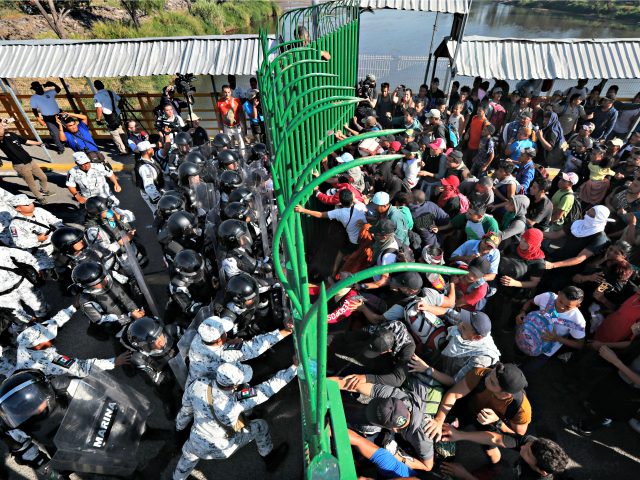Guatemala’s new government says it will preserve an asylum deal with the United States that allows U.S. border agencies to return migrants who pass through the Latin American country on their way to the United States.
“We will continue receiving (migrants), which has really been very limited,” Foreign Minister Pedro Brolo said to journalists in Guatemala’s congress, according to Reuters.
The agreement solidifies a border wall of asylum law which can block migrants from Honduras and El Salvador, and it may be expanded to include other nations, said Reuters:
Brolo said his government was in the process of determining if other nationalities will be included in the U.S. asylum deal, which the government of former President Jimmy Morales struck in July.
Over the past week Guatemala has been dealing with a caravan of mostly Honduran migrants who were crossing its territory on way to the United States via Mexico.
…
Brolo said a delegation from the U.S. Department of Homeland Security was due to visit Guatemala for further discussions on migration.
The deal with Guatemala is especially important because Guatemala occupies the entire land route north towards Mexico. For migrants to avoid entering Guatemala, they would have to go by boat far out into international waters where they can be tracked by aircraft radars. This means Guatemala is acting as a legal wall against all migrants except for people who only enter Mexico before reaching the U.S. border.
The ability to quickly send migrants back to Guatemala means that border officials are not forced to release migrants into the U.S. before their hearings in the backlogged asylum courts. For years, migrants have used that judge-created Flores catch-and-release loophole to slip into the United States, get jobs, and pay off their debts to the cartel-tied smugglers.
Progressives and pro-migration groups have lamented the asylum deal as the potential closure of most of the migration flow into the United States — including the flow of Indians and Africans.
“HORRIFYING,” said a December tweet from Aaron Reichlin-Melnick, an immigration lawyer at the American Immigration Council:
When this goes fully into effect, the Trump administration will have completed the decimation of the American system of asylum which has existed for generations. Mexican, Honduran, Brazilian, Romanian, Chinese, Russian, who cares. They’ll send them all to Guatemala.
In January, he tweeted:
The United States has reached agreements with Guatemala to take the deportations of Honduran asylum seekers, and with Honduras to take the deportations of Nicaraguan and Guatemalan asylum seekers—and we’re making Venezuelan asylum seekers wait in dangerous conditions in Mexico.
Johnathan Blitzer, a writer for New Yorker magazine said:
This was always [Guatemala’s new President, Alejandro] Giammattei’s plan: act critical, in public, as a presidential candidate, while telling the US, in private, that he was fine with the deal as long as it was in place once he took office.
The credit for the deal with Guatemala goes to President Donald Trump, who used his economic and diplomatic leverage to meet the demands of his blue-collar supporters who suffer the most from the large inflow of illegal migrants, workers, and renters.
Establishment groups — including GOP-linked business groups — tried but failed to block Trump’s diplomatic offensive in Latin American and Mexico. This combination of asylum deals, border walls, and catch-and-release cutbacks has dramatically reduced the migrant inflow from 1440,00 in May 2019 to just 30,0000 in December 2019.
For example, Al Jazeera reported:
The US has sent more than 230 Hondurans and Salvadorans to Guatemala since November under the terms of an asylum cooperation agreement, signed in July by former Guatemalan President Jimmy Morales. According to the so-called “safe third country” agreement, US immigration officials can send migrants to Guatemala to seek asylum there or return home to their home country.
…
Of the first 181 Hondurans and Salvadorans sent to Guatemala under the deal, fewer than 10 percent took steps to seek asylum in the country and only two continued in the process as of earlier this week, according to the Guatemalan Immigration Institute.
However, so far, Trump has done little to block the inflow of white-collar, college-graduate migrants via the H-1B, L-1, OPT, and other visa worker programs.
U.S. investors denounce Pres. Trump's 'Public Charge' immigration reform — which will deny them extra consumers & workers, & will shrink taxpayers' spending on medical & welfare programs used by poor & sick migrants.
Money explains much about migration.https://t.co/1vsGVWr7MI.— Neil Munro (@NeilMunroDC) January 21, 2020

COMMENTS
Please let us know if you're having issues with commenting.